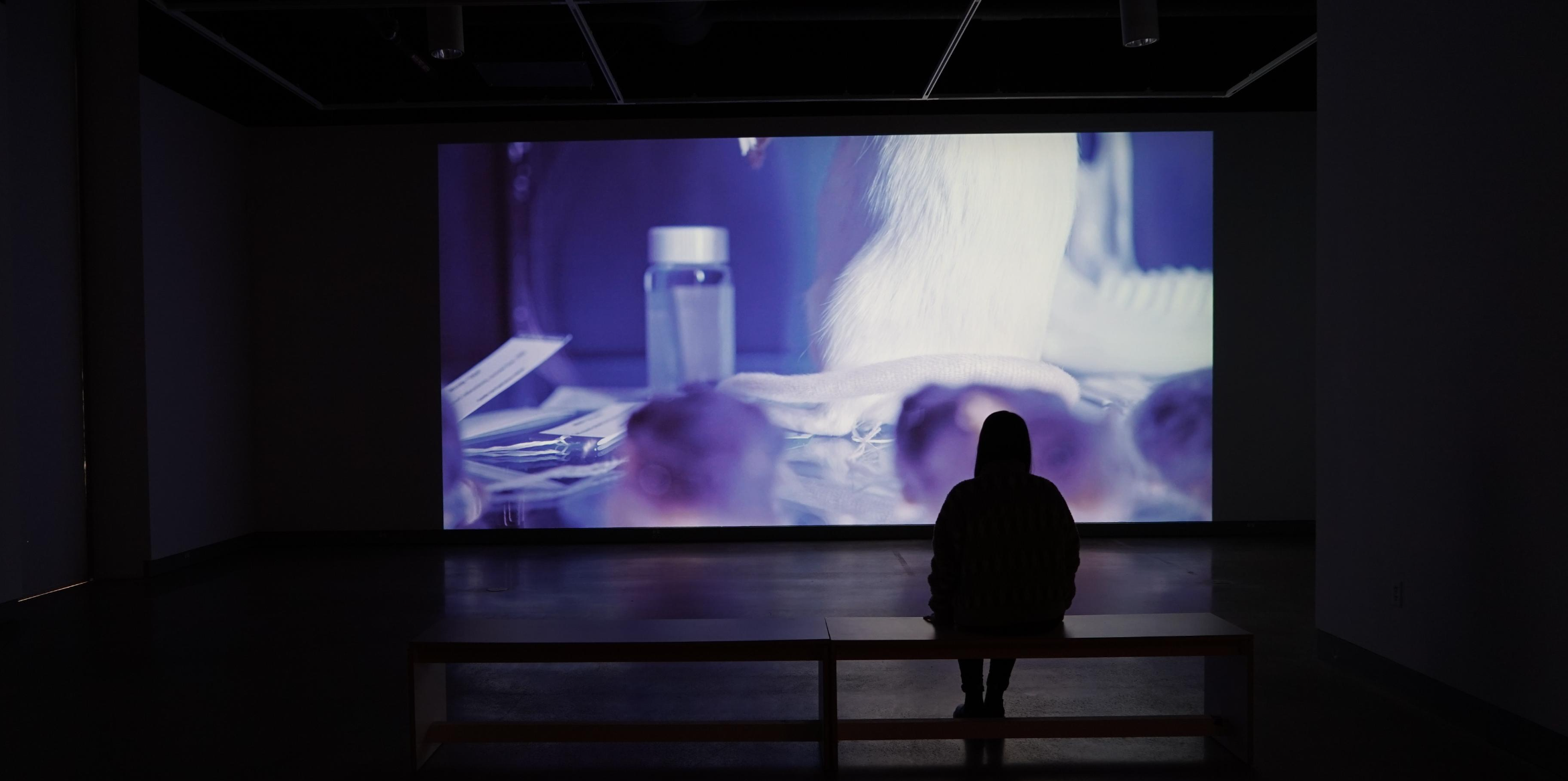Uncanny Playgrounds
Marianne Hoffmeister Castro (2021)Uncanny Playgrounds is Marianne’s thesis project comprising two short film projects called In the Nameless Hour of the Night and The Quiet Ones. The presence of mice inhabits both pieces. From their overarching symbolic and material role in culture and science, these works establish a meeting place that brings forth both the tender but complicated relationships humans create with nonhuman animals.
In the Nameless Hour of the Night by Marianne Hoffmeister Castro :: Supported by FRFF (#2022-044) from STUDIO for Creative Inquiry on Vimeo.
The Nameless Hour of the Night (or- an Ordinary Form of Love) is an experimental short film that follows the nocturnal meanderings of a group of mice that share the kitchen of the artist’s living space. Through the eyes of a motion-activated camera, audiences are offered a glance at a playful ecology of kitchen devices, humans, moths, pipes, cables, and mice: a domestic realm that embodies one of the simplest forms of multispecies cohabitation. In this domain, however, the mice are not metaphors or secondary narrative devices but the subjective center and creators of their world. As observers —or intruders peeking into their nocturnal space— we are invited to witness a world of mouse sovereignties, intimacies, escapes, and fleeting encounters. We are introduced to a different universe, a world where humans are just a fragment in a vast constellation of relationships.
Inspired by the genre of slow cinema and the ethical framework of ecocinema, which offers alternative strategies to represent nonhuman animals, the artist uses the film to provide a tender yet deep space to cultivate forms of attention for other modalities of being.
The Quiet Ones introduces audiences to a different world inhabited by another kind of mouse that audiences won’t encounter daily: model organisms. These mice have been bred and genetically modified for scientific research and testing. Filmed in collaboration with the taxidermy mice model collection that lives at the Center of PostNatural History in Pittsburgh, the short film portrays a story of haunting effects featuring C57 Black mouse, Ribfull and Ribless Mouse Embryos, Mouse Balb/cJ, C57 Black Mouse Obese, DBA Mice, Alcoholic Rat, and a human that cares for them.
The Quiet Ones, 2022. Fragment from Marianne Hoffmeister on Vimeo.

Through a series of vignettes focused on each mouse, where they are gently cleaned, tickled, whispered to, and told the histories of their origins, they are brought back to the realm of the living. Complex issues of bioethics and animal rights arise by blurring the boundaries between the animate and the inert, the ghostly and the material. Paradoxically, the care that, perhaps, was never received during their lifetime comes now when they exist as artifacts embedded into the fields of knowledge production.

The film also utilizes various emotional registers that draw from the poetic, the anthropomorphic, the humorous, the sentimental, and the fable-like to reveal the complex threads of violence, instrumentalization, objectification, and alteration into which many nonhuman animals are forced. The dissonant emotional registers convey the challenging space in which these beings exist, which poses questions and reactions that are difficult to answer or locate. Ultimately, this piece fosters a space of radical empathy for beings that have become the bearers of the consequences of our actions.

The project was made possible with the generous support from Frank-Ratchye Further Fund Grant #2022-018 and guidance from The Center for PostNatural History.


